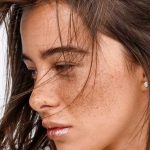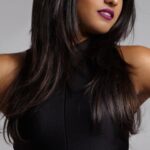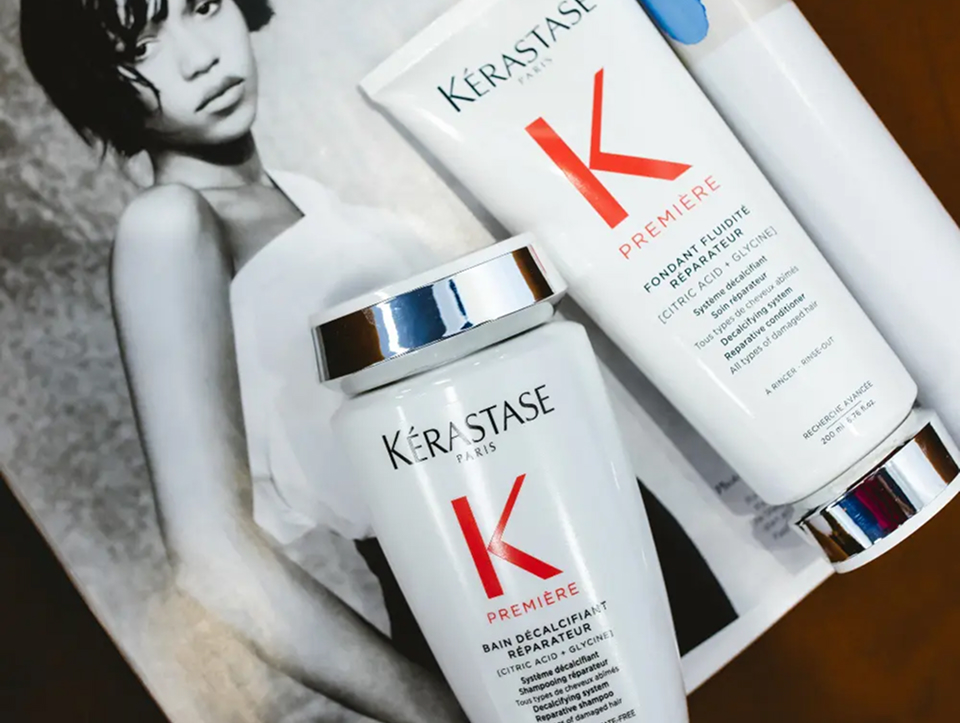Have you ever asked for “just a trim” and ended up with something different?
The truth is salon terms can be confusing. Words like “balayage,” “point cutting,” or “shadow root” mean something particular to a stylist, but if you’re not fluent, you might not get the result you pictured.
This hair salon glossary is your insider’s dictionary to hairdresser lingo. You’ll get definitions, style tips, maintenance advice, product recommendations, and trending variations, so you can communicate exactly what you want.
Bookmark this guide before your next salon visit, and use it as your “cheat sheet” for perfect results. You’ll walk out of the salon every time with hair you love, and without the post-appointment regret.
Haircut Terms

Bangs (Fringe)
Bangs are a haircut that falls over your forehead straight, side-swept, curtain-style, or micro. They frame the face and can transform your entire look.
Pro Tip: Style with Kerastase Mousse Bouffante for light, touchable hold.
Ask Your Stylist: “Which bang style flatters my face shape most?”
Trend Alert: Curtain bangs are still dominating TikTok in 2025.
Blunt Cut
A clean, even line at the ends of your hair, no layers, just sharp precision. Perfect for fine hair because it creates the illusion of thickness.
Home Care: Use a heat protectant before styling to maintain that crisp edge.
Ask For: “Blunt one-length cut, no layering.”
Avoid if: You have incredibly thick hair and want to reduce bulk.
Layered Cut

Different hair lengths within the same cut to add volume, movement, and texture.
Pro Styling: Define layers with Spray à Porter Texturizing Spray.
Best For: Thick or wavy hair that needs shape without heaviness.
Shag Cut
A retro-inspired, layered cut with choppy ends and soft fringe, giving a casual, undone vibe. Originally big in the ’70s, the modern shag works for almost every hair texture from straight to curly.
Pro Styling Tip: Apply a light volumizing mousse to damp hair, then diffuse dry to enhance natural texture.
At-Home Care: Use Kerastase Mousse Bouffante for soft hold without crunch.
Ask Your Stylist: “Can you customize a shag cut for my hair texture?”
Trend Note: The “curly shag” is huge right now, pairing natural curls with volume and movement.
Wolf Cut
A hybrid of the shag and mullet with fuller layers on top, with longer, tapered ends. It’s edgy yet feminine, often styled with messy waves.
Pro Styling Tip: Blow-dry upside down for extra lift, then use a texture spray like Spray à Porter for that tousled finish.
Best For: Medium to thick hair that holds volume.
Ask Your Stylist: “I want a layered wolf cut with fringe that suits my face shape.”
Trend Note: TikTok made this one famous, especially in vibrant, bold colors.
Mullet
Short at the front and sides, long in the back, the mullet has evolved into a statement fashion cut. Today’s “fashion mullet” features softer blending and face-framing layers for wearability.
Pro Styling Tip: Keep the top textured with a matte paste or light-hold gel for definition.
Ask Your Stylist: “Can you do a soft mullet that works with my hairline?”
Trend Note: Miley Cyrus and other celebs have helped make the mullet mainstream again.
Graduated Bob (Stacked Bob)

A bob cut shorter at the back with stacked layers for volume, gradually lengthening toward the front.
Pro Styling Tip: Round-brush blow-dry to boost the stacked volume.
Best For: Straight or slightly wavy hair.
Ask Your Stylist: “Can you tailor the stack height to suit my jawline?”
Asymmetrical Pixie
A pixie cut with one side longer than the other for a modern twist.
Pro Styling Tip: Add volume powder at the roots to keep lift and texture.
Ask Your Stylist: “Please shape the longer side to frame my cheekbones.”
Feathered Cut
Light layers that flick outward, creating soft, airy movement, a signature ’70s look.
Pro Styling Tip: Use a medium-barrel curling iron to flip ends outward.
Ask Your Stylist: “Please cut layers that feather away from my face.”
Face-Framing Layers
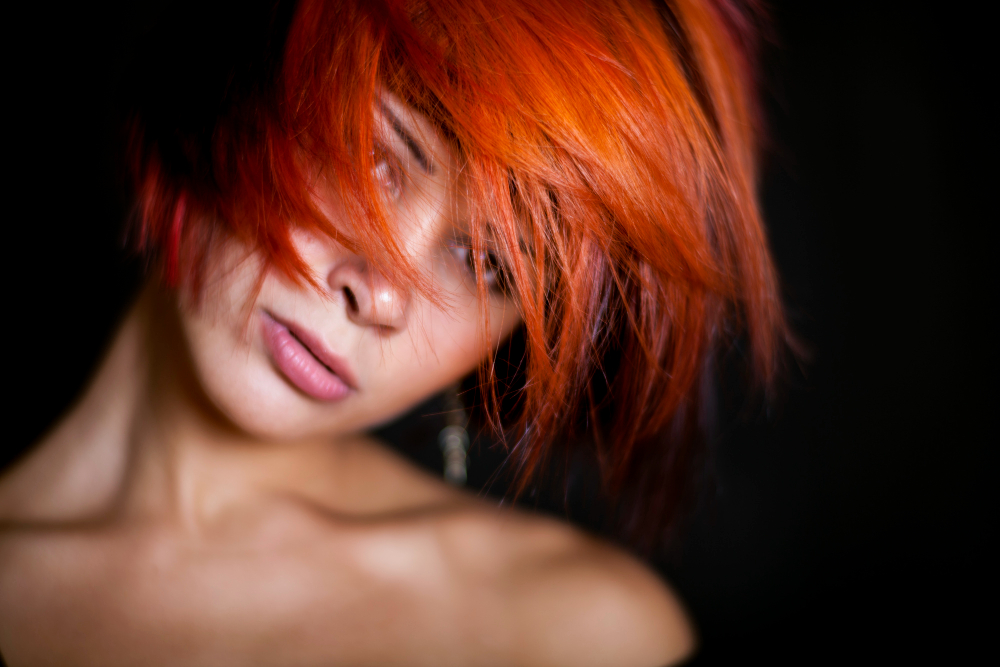
Layers are cut to enhance facial features. They can be subtle or dramatic, depending on the shape desired.
Pro Styling Tip: Use a smoothing serum to keep these layers polished.
Ask Your Stylist: “What layer length will flatter my face shape most?”
Precision Cut
A meticulously measured, geometric cut with exact lines and symmetry popularized by Vidal Sassoon.
Pro Styling Tip: Best maintained with frequent trims to keep the shape sharp.
Ask Your Stylist: “I want a precision cut that complements my face proportions.”
Texturizing
The term involves a technique for thinning out hair, which helps reduce bulk while maintaining length.
If you have unruly, thick hair, this technique adds a lightweight feel with movement.
To enhance the definition of your style, we recommend using Spray a Porter Texturizing at home.
Coloring And Styling Terms

Balayage
A French hand-painting technique that creates soft, natural-looking highlights. Unlike foiling, balayage gives a sun-kissed effect with seamless blending.
Pro Styling Tip: Use a wide-tooth comb to blend sections during styling, enhancing the natural flow.
At-Home Care: Keep your color vibrant with Kerastase Color Correct Protect leave-in treatment.
Ask Your Stylist: “Can you customize balayage highlights to suit my skin tone and hair texture?”
Trend Note: Balayage remains a top-requested look for low-maintenance, lived-in color.
Ombré
A gradient color effect, typically darker at the roots, fading into lighter ends. This technique can be subtle or bold depending on your style.
Pro Styling Tip: Blow-dry with a round brush to accentuate color transitions.
At-Home Care: Maintain vibrancy with a color-safe shampoo & conditioner. Check out Ombré Effect Tips.
Ask Your Stylist: “How can we achieve a soft ombré without harsh lines?”
Trend Note: Perfect for growing out hair without frequent touch-ups.
Toner

Used after bleaching to adjust or neutralize unwanted shades (like yellow or brassy tones). Toners give hair the desired warm or cool hue.
Pro Styling Tip: Apply evenly on damp hair; leave on per your stylist’s recommendation for best results.
At-Home Care: Use a color-protecting shampoo to extend toner longevity.
Ask Your Stylist: “Can you recommend the right toner for my blonde or pastel hair?”
Trend Note: Essential for maintaining platinum or fashion colors.
💡 Learn more about toner application here.
Highlights
Sections of hair are lightened to create contrast or dimension. Highlights can be delicate or chunky depending on the desired look.
Pro Styling Tip: Use a comb or your fingers to blend the lightened sections when styling.
At-Home Care: Use a purple or violet shampoo to prevent brassiness in lighter shades.
Ask Your Stylist: “What highlight thickness will suit my hair type and face shape?”
Lowlights
Darker strands are added to give depth and dimension to your hair, often paired with highlights for a natural, multi-dimensional effect.
Pro Styling Tip: Style with loose waves to showcase the contrast.
Ask Your Stylist: “Can we balance lowlights and highlights for a natural effect?”
Root Shadow / Smudge
A technique that softens the line between colored hair and natural roots, giving a blended, lived-in appearance.
Pro Styling Tip: Comb lightly after washing to blend the root shadow naturally.
Trend Note: Perfect for extending time between color touch-ups.
Ask Your Stylist: “Can you create a root shadow that grows out gracefully?”
Color Melt
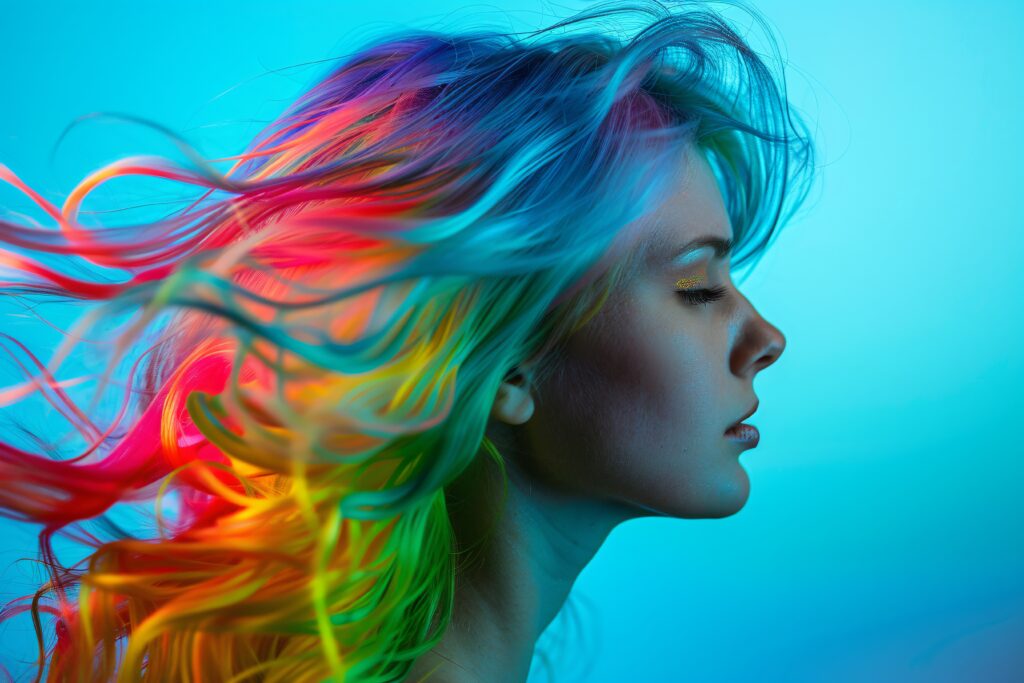
A seamless gradient where multiple shades blend, from roots to tips, creating a multi-dimensional, soft look.
Pro Styling Tip: Blow-dry with a round brush to emphasize the subtle shifts in color.
Ask Your Stylist: “Which shades will create a natural color melt for my hair?”
Gloss / Glaze
A semi-permanent treatment to enhance shine, tone hair, or refresh color between dye sessions.
Pro Styling Tip: Apply to damp hair after washing, let sit for the recommended time.
At-Home Care: Use a nourishing mask to keep hair healthy.
Ask Your Stylist: “Can a gloss help revive my faded color without adding new pigment?
Babylights
Incredible, subtle highlights that mimic the natural lightning effect seen in children’s hair.
Pro Styling Tip: Ideal for face-framing pieces or softening the overall color.
Ask Your Stylist: “How can we add babylights for a natural sun-kissed look?”
Glossing Tips for All Colors
- Protect hair with thermal and UV products.
- Use color-safe shampoos and conditioners.
- Schedule regular trims to prevent dull ends.
- Consider deep-conditioning treatments like Kerastase Spray à Porter for added shine and smoothness.
Hair Health Terms
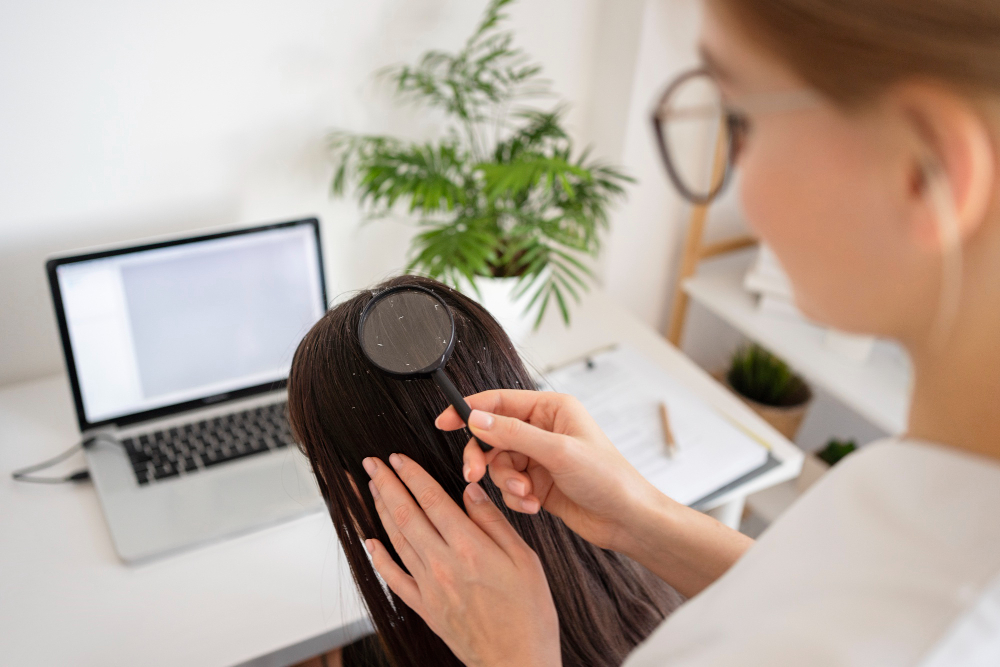
Dry Scalp
A condition where the scalp lacks moisture, causing flakiness, itching, or irritation.
Pro Treatment Tip: Regular scalp massages with nourishing oils or treatments help restore hydration. Try a professional scalp therapy session for targeted care.
At-Home Care: Use hydrating shampoos and gentle exfoliating scrubs to remove buildup.
Ask Your Stylist: “Which scalp treatments will relieve dryness without weighing my hair down?”
💡 Learn More
Frizz
Hair that sticks out or appears fluffy due to humidity, dryness, or damage.
Pro Treatment Tip: Apply smoothing serums or lightweight oils on damp hair before styling to tame frizz.
At-Home Care: Kerastase Anti-Frizz Oils & Serums help maintain sleekness.
Ask Your Stylist: “Can you recommend a leave-in treatment or serum for my hair type?”
Split Ends

Brittle or frayed hair tips caused by heat, chemical treatments, or mechanical damage.
Pro Treatment Tip: Schedule regular trims and use protein-rich masks to strengthen strands.
At-Home Care: Avoid harsh brushing, heat overuse, and always use a heat protectant.
Ask Your Stylist: “How often should I trim to prevent split ends?”
Volume
The fullness or lift of hair at the roots is often lacking in fine or limp hair.
Pro Styling Tip: Blow-dry hair upside down or use volumizing mousse at the roots to boost body.
At-Home Care: Lightweight mousses and root-lifting sprays are ideal; avoid heavy creams that flatten hair.
Ask Your Stylist: “Which products will enhance my hair’s natural volume without buildup?”
Recommendation: Kerastase Hair Mousse
Understanding The Extras
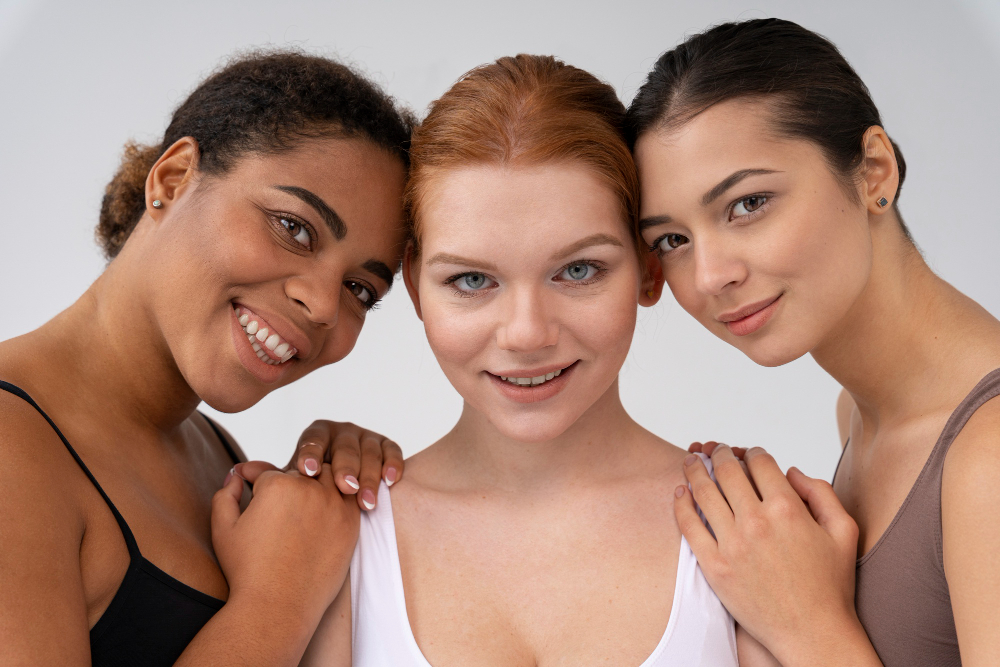
Co-Wash
Cleansing hair with conditioner instead of shampoo to preserve moisture, especially for curly or dry hair.
Pro Treatment Tip: Co-washing helps reduce frizz and maintain curl definition.
At-Home Care: Follow with a light leave-in conditioner and detangle gently with fingers or a wide-tooth comb.
Ask Your Stylist: “Is co-washing suitable for my hair type and routine?”
Deep Conditioning
Intensive treatments designed to repair, hydrate, and strengthen hair.
Pro Treatment Tip: Apply deep conditioner on damp hair and wrap with heat for maximum absorption.
At-Home Care: Use 1–2 times per week for dry or chemically treated hair.
Ask Your Stylist: “Which deep-conditioning mask will best repair my hair?”
💡 Check out our deep conditioner guide.
Brazilian Blowout

A smoothing treatment that reduces frizz and enhances shine using keratin-based formulas.
Pro Treatment Tip: Ideal for frizzy or wavy hair; maintain with sulfate-free products to prolong results.
At-Home Care: Gentle washing and limited heat styling preserve the effect.
Ask Your Stylist: “Will a Brazilian Blowout suit my hair texture and lifestyle?”
💡 Learn More
Keratin Treatment
Hair treatment that infuses keratin protein to strengthen, smooth, and reduce frizz.
Pro Treatment Tip: Great before heat styling to minimize damage and increase shine.
At-Home Care: Use gentle, sulfate-free shampoos and conditioners to prolong results.
Ask Your Stylist: “How long will keratin treatment last, and how do I maintain it?”
Tools of The Trade
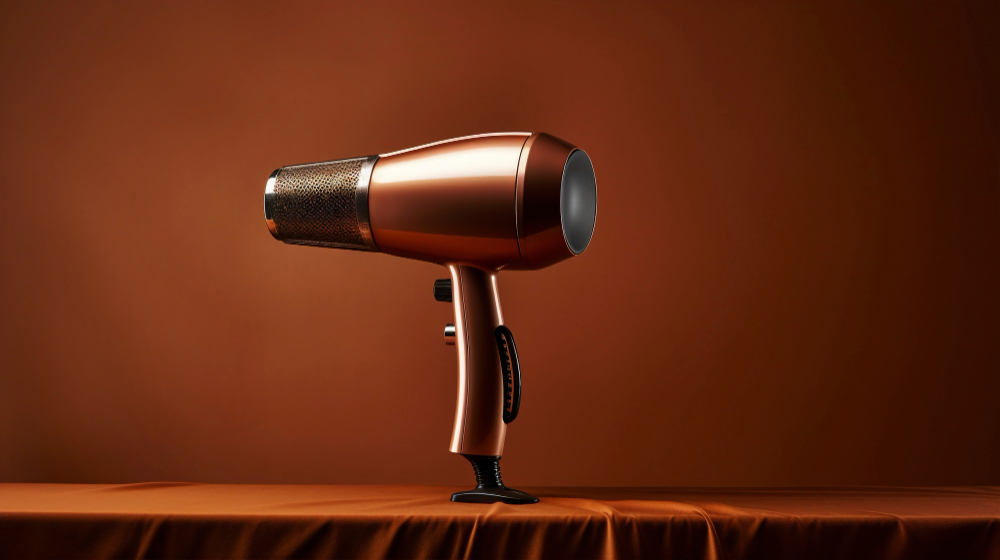
Diffuser
A blow-dryer attachment designed to distribute air evenly, reducing frizz and maintaining curl or wave patterns.
Pro Styling Tip: Use on low heat and speed, scrunching curls upward to enhance natural texture.
At-Home Care: Apply a curl cream or mousse before drying for maximum definition.
Ask Your Stylist: “Can a diffuser help maintain my curls without causing frizz?”
Flat Iron
A tool for sleek, straight styles or soft waves.
Pro Styling Tip: Always use a heat protectant before styling and work in small sections for smooth results.
At-Home Care: Clean plates regularly to avoid residue and uneven heat.
Ask Your Stylist: “What temperature is safe for my hair type to prevent damage?”
Round Brush

A versatile styling brush that adds volume, smoothness, and bounce when blow-drying.
Pro Styling Tip: Use to lift roots and curl ends during a blowout for salon-quality results.
At-Home Care: Brush hair gently to detangle before styling; clean the brush regularly to remove buildup.
Ask Your Stylist: “Which size round brush is best for my hair length and desired style?”
Shears (Hair Scissors)
Professional scissors are used for precision cutting, shaping, and trimming.
Pro Styling Tip: Regularly trim ends to maintain healthy hair and shape styles like layers or bobs.
At-Home Care: Avoid using household scissors—they can cause split ends.
Ask Your Stylist: “How often should I trim to keep my hair healthy and styled?”
A core styling tool for drying, volumizing, or smoothing hair.
Pro Styling Tip: Use a nozzle attachment to direct airflow and reduce frizz. Pair with a heat protectant for shiny, damage-free hair.
At-Home Care: Avoid using maximum heat for prolonged periods; let hair cool before touching to set the style.
Ask Your Stylist: “Which blow-drying technique will give me lasting volume or sleekness?”
Curling Wand / Iron

A tool used to create curls or waves of various sizes.
Pro Styling Tip: Wrap hair around the barrel, hold for a few seconds, and release for defined curls—alternate directions for a natural look.
At-Home Care: Use a heat-protectant spray and avoid daily heat styling to prevent damage.
Ask Your Stylist: “What barrel size should I use for my hair length and desired curl type?”
Hair Clips & Sectioning Tools
Clips, pins, or clamps that help section hair for cutting, coloring, or styling.
Pro Styling Tip: Sectioning hair ensures precision during cutting or coloring and prevents uneven results.
At-Home Care: Use gentle clips to avoid breakage and avoid leaving hair pinned for long periods.
Ask Your Stylist: “Which clips are best for my hair thickness and style routine?”
Your Ultimate Hair Salon Glossary
Now that you’ve explored the essential hair terms, tools, treatments, and styling tips, you can confidently step into any salon and speak your hair language like a pro.
From haircuts like layers, bobs, and mullets to coloring techniques like balayage, ombré, and toners, understanding these terms helps you achieve the look you’ve always dreamed of.
Remember, great hair isn’t just about the cut or color; it’s about using the right tools, treatments, and products to maintain your style and hair health.
Whether it’s fighting frizz, boosting volume, or keeping color vibrant, your newfound knowledge gives you the confidence to ask the right questions and get professional results every time.
Ready to transform your hair? Book an appointment with our expert stylists today at Haste Hair and let us bring your dream look to life. Your perfect hair journey starts here.
FAQ
What are the most common haircut terms?
Standard haircut terms include layers, bob, blunt cut, pixie, mullet, and asymmetrical cuts. Understanding these terms helps you communicate your desired style effectively with your stylist.
What is the difference between balayage and ombré?
Balayage is a hand-painted technique for soft, sun-kissed highlights, while ombré creates a gradual color fade from dark roots to lighter ends. Both are low-maintenance but suit different styles and preferences.
How do I know which hair treatment is right for me?
Hair treatments like keratin treatments, Brazilian blowouts, deep conditioning, or co-washing are chosen based on hair type, texture, and styling goals. Consult your stylist to match the treatment with your hair’s needs.
How do I choose the best haircut or color for my face shape?
Your stylist considers face shape, hair texture, and lifestyle to recommend cuts or colors that enhance your features. Popular options include layered cuts for volume, bobs for sophistication, and balayage for natural dimension.






